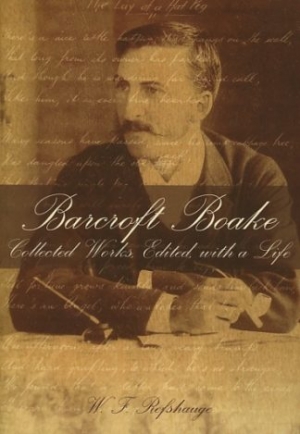Archive
The world bank’s 1993 report, The East Asian Miracle, conveyed the quasi-religious awe prompted by the economic progress of many East Asian societies in the last quarter of the twentieth century. While somewhat self-serving (it was funded by Japanese money), it set the tone for much of the political and economic analysis of East Asia in the 1990s and its prospects. With few exceptions, we were told that the future belonged to Asia, that export-oriented industrialisation and selective liberalisation were the keys to growth, and that Asian societies had certain cultural features which furthered their comparative advantage and questioned the universality of Western notions such as democracy and human rights. This suddenly ended in July 1997 when the collapse of the Thai baht prompted a series of currency crises that produced political and social turmoil across the region. The Asian financial crisis, borne of bad investments, dodgy government–business relations and that favourite of the press, ‘crony capitalism’, raised questions about the foundations of Asia’s strength and the ‘Asian century’.
... (read more)On a first reading, the accomplished poetry of Tracy Ryan seems spiky, colloquial, earthy and enjoyable. But the more subtle accomplishments of the poetry lie in wait on a second reading: the musicality, the careful crafting, an honouring of the traditions of poetry, the rhythms and experiences of the everyday and the bodily. To name her themes draws us into the poetry: motherhood, the vicissitudes of the body, childhood and parenting, work, love, poetry, death. But it is in beginning to hear the musicality of Ryan’s metaphoric language that a second step can be taken. Alliterative, demotic, formally playful, morally serious, the poetry of Scar Revision is craft and presence finely balanced.
... (read more)Gerry Wilkes has done the state a great deal of service, and he should get full credit once again, as the eclipsed terrain of Australian literature emerges into the sunlight: which it seems to be doing right now, to judge from some recent movements in publishing. So let’s keep abreast of our language, all the while: that is to say, of our dominant or mainstream language, amid whatever others we have to offer.
... (read more)Murray Bail’s fiction inhabits a curious space. Despite its attention to the detail of the rural landscape, the ‘endless paddocks and creaking tin roofs’, it is not, in any meaningful sense, realist, either in its intention or its execution. Instead, against carefully created backdrops, it weaves something closer to fairy tales, looping meditations on the power of story, and love, whose affinities lie – for all that many of Bail’s world of pastoralists who dress for dinner and unmarried daughters wilting in the Australian emptiness sometimes might not seem out of place in Patrick White – with distinctly un-Australian writers such as Calvino, Borges and, though less obviously, Rushdie and Marquez. It is not for nothing that the narrator of Eucalyptus (1999), Bail’s best novel, bemoans the ‘applied psychology’ that ‘has taken over storytelling, coating it and obscuring the core’. Yet, where the baroque outcroppings of detail in the magical realists of the 1980s serve to highlight the artifice of their creations, the detail of Bail’s fiction does quite the opposite, providing instead a framework for his fiction’s very particular reality.
... (read more)Lucy Dougan’s recent collection of poetry, White Clay, demonstrates a considerably wider range than her first collection, Memory Shell (1998), while reaffirming how centrally preoccupied her poetry is with the potency of lost time, and also with finding the truth behind appearances, locating what is hidden or marginal and tracking down family ghosts.
... (read more)Nation-building, educational imperatives, old-fashioned economics: children’s books get published for a variety of reasons, none of which alone is a guarantee of quality. Ultimately, a picture book’s success or failure comes from within, the interplay of the words and pictures on the page, and children have a wonderful way of reading around the institutional pathways constructed for them by authors and publishers. Why walk next to a wall when you could run along the top?
... (read more)Patrick Allington replies to John Carmody
Dear Editor,
I sort of but don’t exactly agree with John Carmody, who sort of but didn’t exactly agree with my mixed review of Tony Jones’s edition of The Best Australian Political Writing (May 2008). Carmody suggests that the anthology should have been called ‘Best Political Journalism’ because it ‘completely lacks’ academic writing or reflective essays. I agree that the book was journalism-heavy, but there’s nothing to be gained by overstatement. It also included a number of longer essays, the best of which were intelligent, learned, thought-provoking and impassioned.
... (read more)It is no easy task for an outsider to anatomise a national cinema, and the Austrian academic Adi Wimmer suggests in this series of essays that Australian cinema has always been more national than most. In other words, our filmmakers have been unusually dedicated to the project of defining a collective identity through a set of instantly recognisable myths: the ultimate Australian film would be one that showed a group of sun-bronzed, laconic, Anglo-Saxon blokes battling droughts and big business in a wide brown land seen equally as a symbol of brooding masculinity and as a hostile mother.
... (read more)Barcroft Boake is remembered as one of the lesser lights in the school of Bush poets publishing in the Sydney Bulletin in the late nineteenth century. Two facts are probably known to most people who have heard of him: that he wrote a gloomy but impressive and memorable poem, much anthologised, called ‘Where the Dead Men Lie’, and that he hanged himself with his stock-whip when young. (Some, mindful of Keats, might guess he was twenty-six when he died, and they would be right.)
... (read more)







